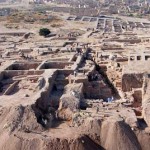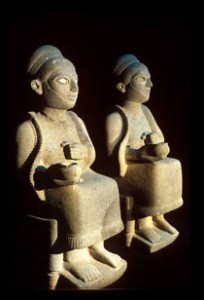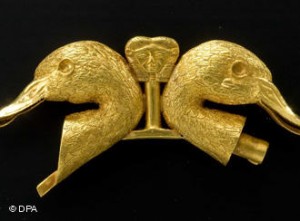 Archaeologists excavating under the ancient royal palace of Qatna in what is now Syria have uncovered a 3500-year-old crypt untouched by grave robbers.
Archaeologists excavating under the ancient royal palace of Qatna in what is now Syria have uncovered a 3500-year-old crypt untouched by grave robbers.
The crypt has two chambers — an anteroom and the grave room where the human remains are — and is 16 feet by 21 feet in dimension.
Thirty skulls within suggest that a corresponding number of people were buried there, and bones stacked in groups among splinters of wood may indicate a secondary burial, the statement said.
Ceramic and well-preserved stone vessels of granite and alabaster, along with gold jewellery and other artefacts were also within the crypt. The team also found a small sculpture of a monkey holding a vessel used for cosmetics and an ivory human statuette.
The bones could well be the remains of royal family members or people in their household. There are no inscriptions, so even though of course the bones will be examined thoroughly, it’s not likely archaeologists will be able to identify the remains.
Qatna was a major kingdom in the Bronze Age. It was a trading hub between Mesopotamia, the Mediterranean, Anatolia and Egypt with as many as 20,000 inhabitants in the city at its peak, 1800 – 1600 B.C. The city was finally burned down in 1340 B.C.
Previous excavations at the palace have uncovered one other unlooted grave packed with goodies. The artifacts from that find will be on display in the Wuerttemberg State Museum in Stuttgart come October 17th. This will be the first time Qatna artifacts will be exhibited in Europe.

